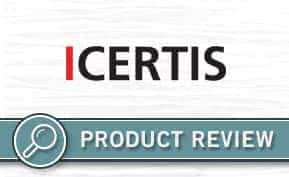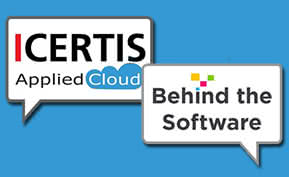Contract Management
The Four Steps of Contract Management Excellence

If one of your initiatives is to get your contracts in order in 2013, you’re not alone.
Contract lifecycle management (CLM) has gotten a lot of attention lately, including a mention in a recent Gartner report as a solution that promotes high levels of sales efficiency. (And freeing the sales team up from monotonous busy-work is just a side benefit.)
Ultimately, CLM shines as a tool that helps the legal team promote higher levels of process integrity, process efficiencies, risk management, cost optimization, and compliance. But recognizing those benefits takes a little effort, so if you think you can achieve contract management excellence by implementing a contract management solution and walking away, you’re wrong. While contract management excellence certainly begins with a modern system for repository, authoring, and change management, to fully exploit the technology for your benefit you need to take a phased approach to implementation, and constantly improve your process as you go.
Why Should You Take a Phased Approach to Contract Management?
In order to exploit the full potential of contract management solutions, you shouldn’t attempt to boil the ocean in one pass. Begin by looking at “what’s possible” (where you’d ultimately like to be) then separate the vision into manageable chunks. This will allow you to develop a clear and informed path for increasing sophistication as you go.
At Selectica, we have broken down contract management into four easy steps, which we call, “The four stages of contract management excellence.”
The Four Stages of Contract Management Excellence
1. Consolidation: “Get things in one place and organized”
When you first start out with contract management, you just want to get your contracts and files in one place, and standardize the information so you can easily find what you’re looking for. (For some companies, this alone can seem a daunting project.) No matter how complicated or messy your contract are, if you start small, and confine your efforts to one contract type (often procurement) it’s quite manageable. You may also discover that not every contract needs to go into the system, and focus on newer contracts, or contracts that will inevitably change.
Once you have everything in one place, you may also want to take a look at some basic integrations—usually with Word, Email, and document systems. From there, you can let users adjust to using the system before you move further. This step is the groundwork for things to come, and while there is certainly immediate benefit in consolidating your contracts, you will see that the process improvements grow exponentially as you move through the stages.
2. Task Automation: “Deliver immediate tactical benefits to specialists/insiders”
While the first stage of contract management excellence is about consolidation, the second step is about removing manual steps around creating and revising contracts. You may choose to implement some workgroup support in this phase, and focus on achieving greater ease of use by adding better GUI, and functionality that allows you to compare versions, make changes, etc.
In this phase, you may implement back office integrations with logistical, fulfillment and servicing systems, and begin bringing others in the organization into the system.
3. Process Efficiencies: “Expand benefits across organizations; extract more productivity”
Phase three is where you really begin to see notable process improvements, and a more streamlined system. Focus in this phase is placed on achieving greater “end-to-end” process support and expanding your contract types (to include sales, procurement, employment, etc.)
The goal in this phase is to enable broader collaboration for managing projects, tenders, and bid responses by developing a wider application ecosystem (integration with procurement, SRM, ERP, CRM). You may also integrate time savers like e-signature, single-sign on, mobile access, front-end integration, and more.
4. Contract Performance: “Understand historical and future trends; act more swiftly and intelligently”
This final stage is where organizations begin leveraging contract lifecycle management to achieve a true competitive advantage. You’re going beyond the day-to-day tactical in this phase, and achieving a holistic view of historical performance.
In this stage, you may focus on acquiring a history and benchmark on events and performance, analyzing outcomes and trends, and applying insights to achieve higher levels of agility. Contract Performance is where you adopt a lot of the bells and whistles, and begin offering role-based access, dashboards, tracking, milestone analysis, revenue recognition, and more.
A Journey of a Thousand Miles Begins With One Contract
Well managed contracts can be a competitive differentiator, but to be successful, don’t try to do it all in one pass. Use the four stages of contract management excellence as a framework for taking a phased (and therefore more successful) approach to CLM implementation.
Want more on Contract Management Software? Browse additional articles and reviews on best contract creation tools and contract management software with Business-Software.com’s CLM resource page. Also check out the free Top 10 Contract Management report which compares pricing, features and more to select the best CLM solution for your business.





